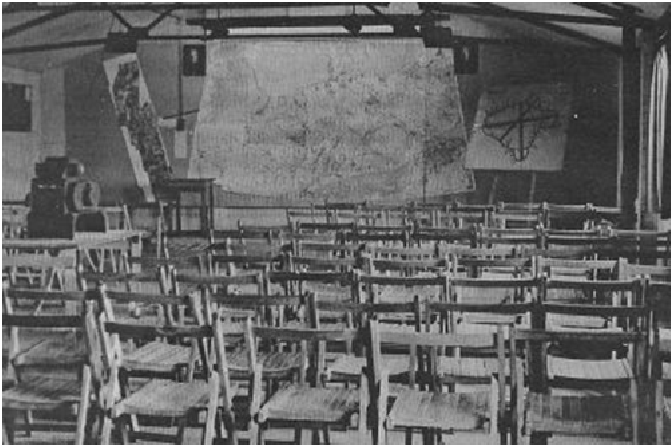The Raid on Nuremburg |
|
The code name of the target, “Grayling,” was sent to all group commanders and in turn to stations and squadron commanders. Security was immediately put into force. All outgoing phone calls were blocked and those incoming were intercepted, cutting stations off from the outside world as preparations for the raid began. |
|
|
The target tonight is Nuremberg on the river Pegnitz some 90 miles to the north of Munich. As a military target, Nuremberg is an important industrial city with a population of 350 000 and a centre for general and electrical engineering. The famous M.A.N. works produce armaments of all kinds there and, since their large factory in Berlin was bombed, Siemens plant in Nuremberg has stepped up production of its electric motors, searchlights and firing devices for mines. There we were, 112 of us each with our own private thoughts. But all thinking on similar lines, such as “Will our crew be one of the lucky ones?, Is this it? Will I ever see the wife again? |
|
|
|
795 bombers had taken off, 2 crashed at their bases and 55 turned back with various unservices abilities, 738 heavy bombers then followed the planned route to Nuremberg.
It is apparent that on clear nights the growing technical skill of the German night-fighter controllers and the new Lichtenstein airborne radar units combine with the German ability to track RAF H2S and IFF transmissions in inflicting unacceptable loss rates on the attacking force. Flying over the main land, they would soon be out of range from the UK based "Gee" navigation beacons and rely on dead reckoning from the forecast winds. Selected crews were tasked to radio back their estimate of the actual winds, which would be averaged at group HQ and rebroadcast. Navigators would then use this revised wind estimate to adjust their heading and regain track. The system depended on many accurate calculations by navigators in the cold and cramped bombers and should have kept the 68 mile long stream concentrated on the planned route and allow crews to bomb the target at their allocated times. |
|
|
Most of the returning crews reported that they had bombed Nuremberg but subsequent research showed that approximately 120 aircraft had bombed Schweinfurt, 50 miles north-west of Nuremberg. This mistake was a result of badly forecast winds causing navigational difficulties. 2 Pathfinder aircraft dropped markers at Schweinfurt. Much of the bombing in the Schweinfurt area fell outside the town and only 2 people were killed in that area. The main raid at Nuremberg was a failure. The city was covered by thick cloud and a fierce cross-wind which developed on the final approach to the target caused many of the Pathfinder aircraft to mark too far to the east. A 10-mile-long creepback also developed into the countryside north of Nuremberg. Both Pathfinders and Main Force aircraft were under heavy fighter attack throughout the raid. Little damage was caused in Nuremberg.
|
|

